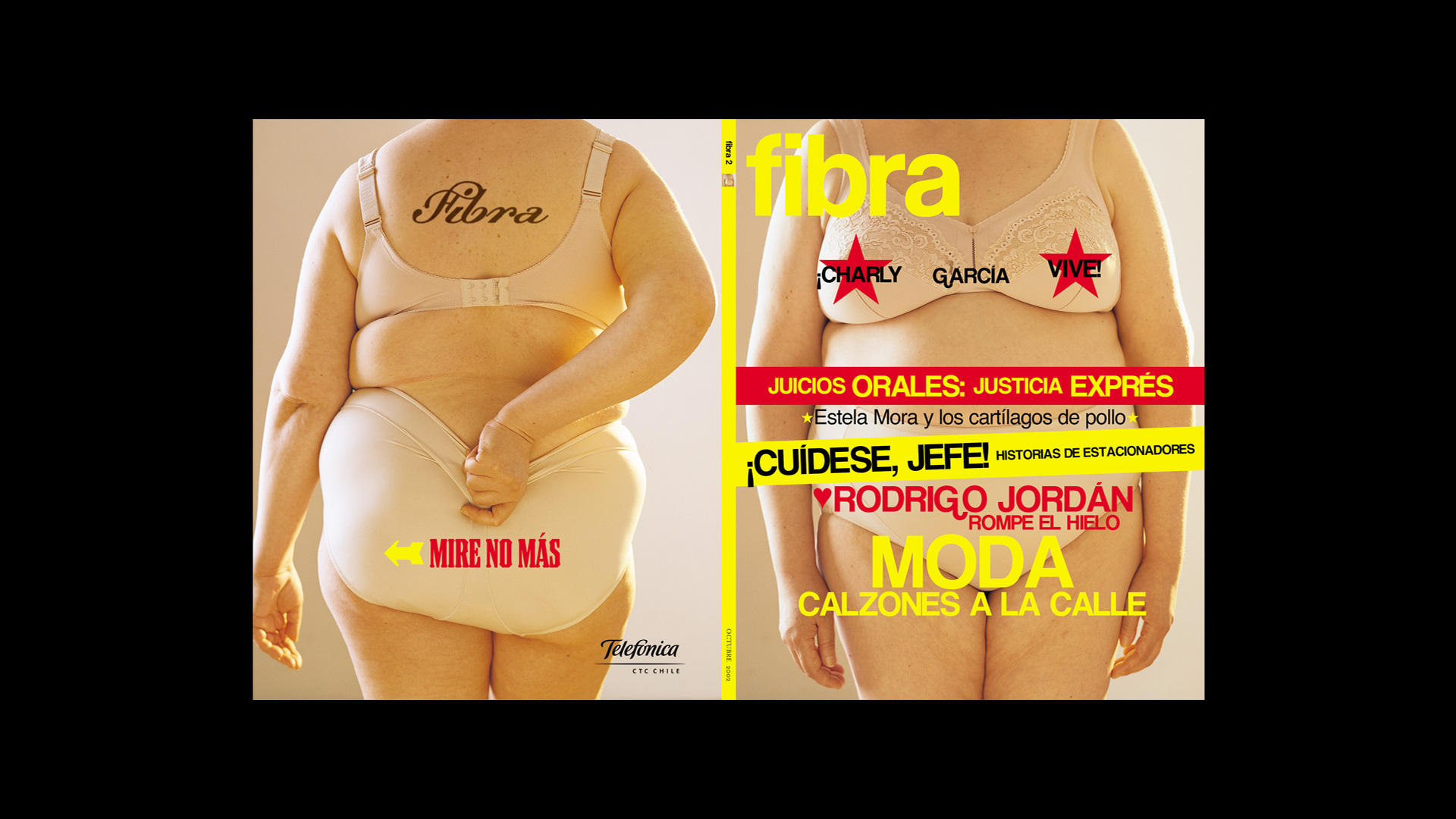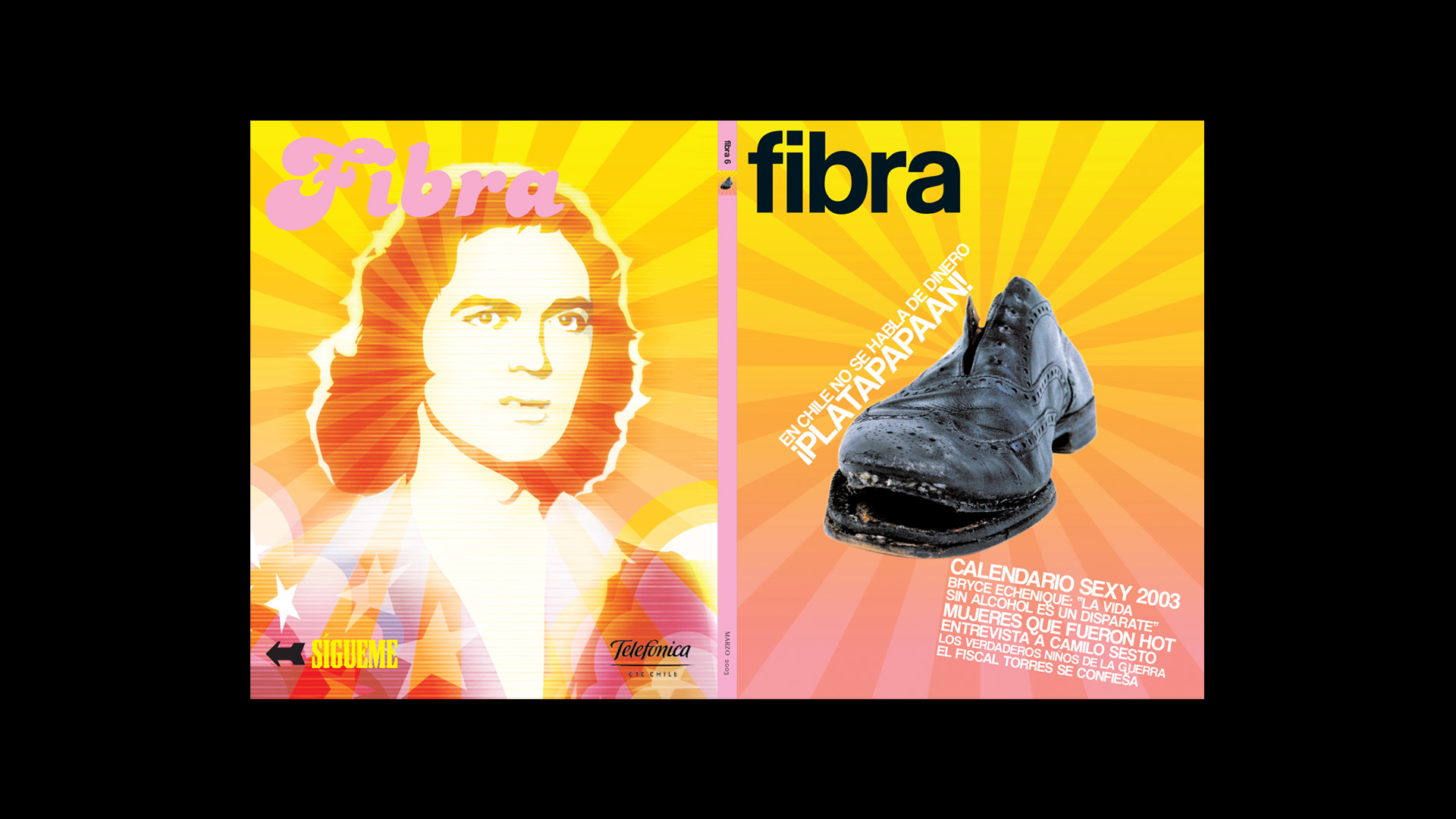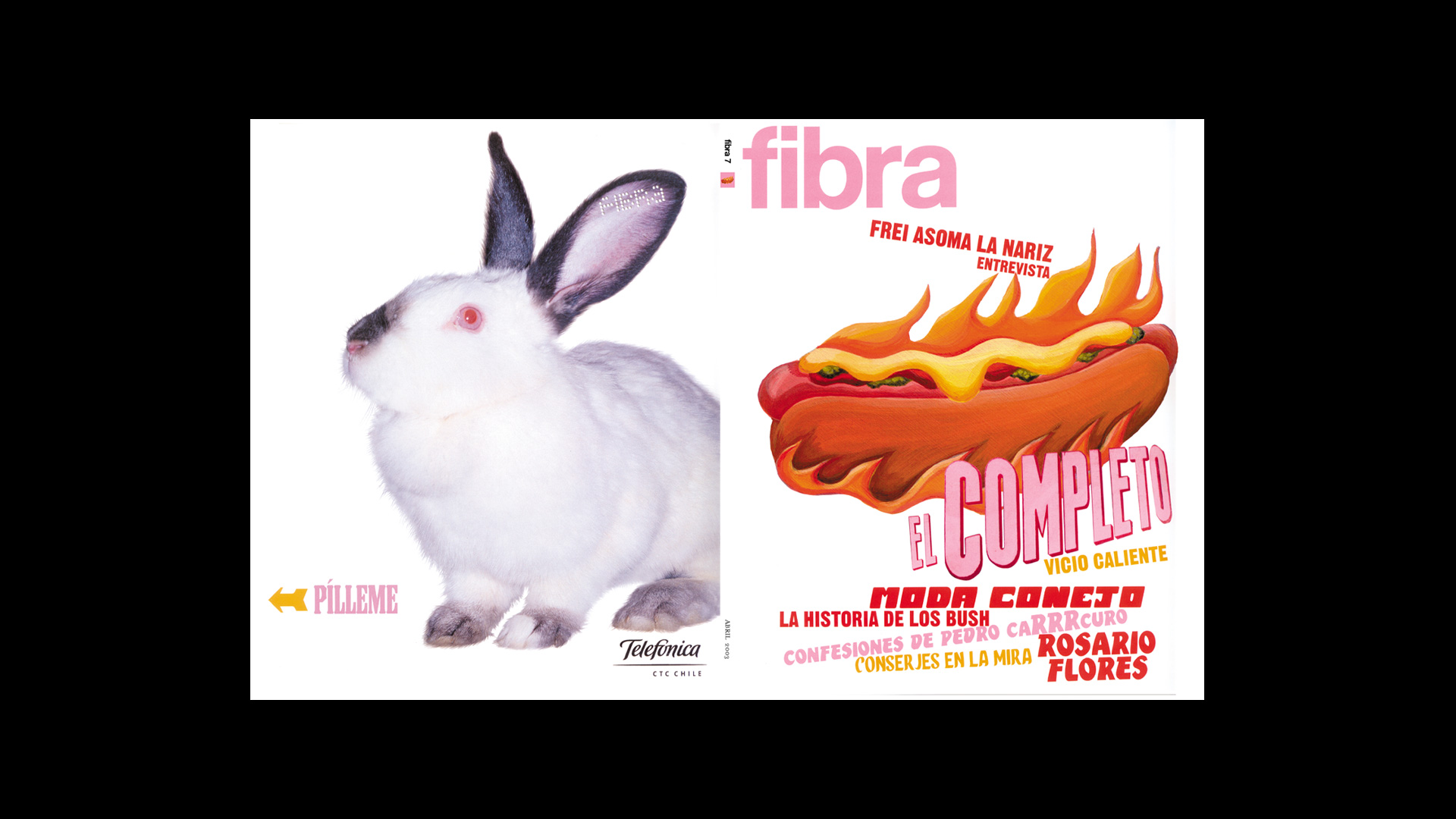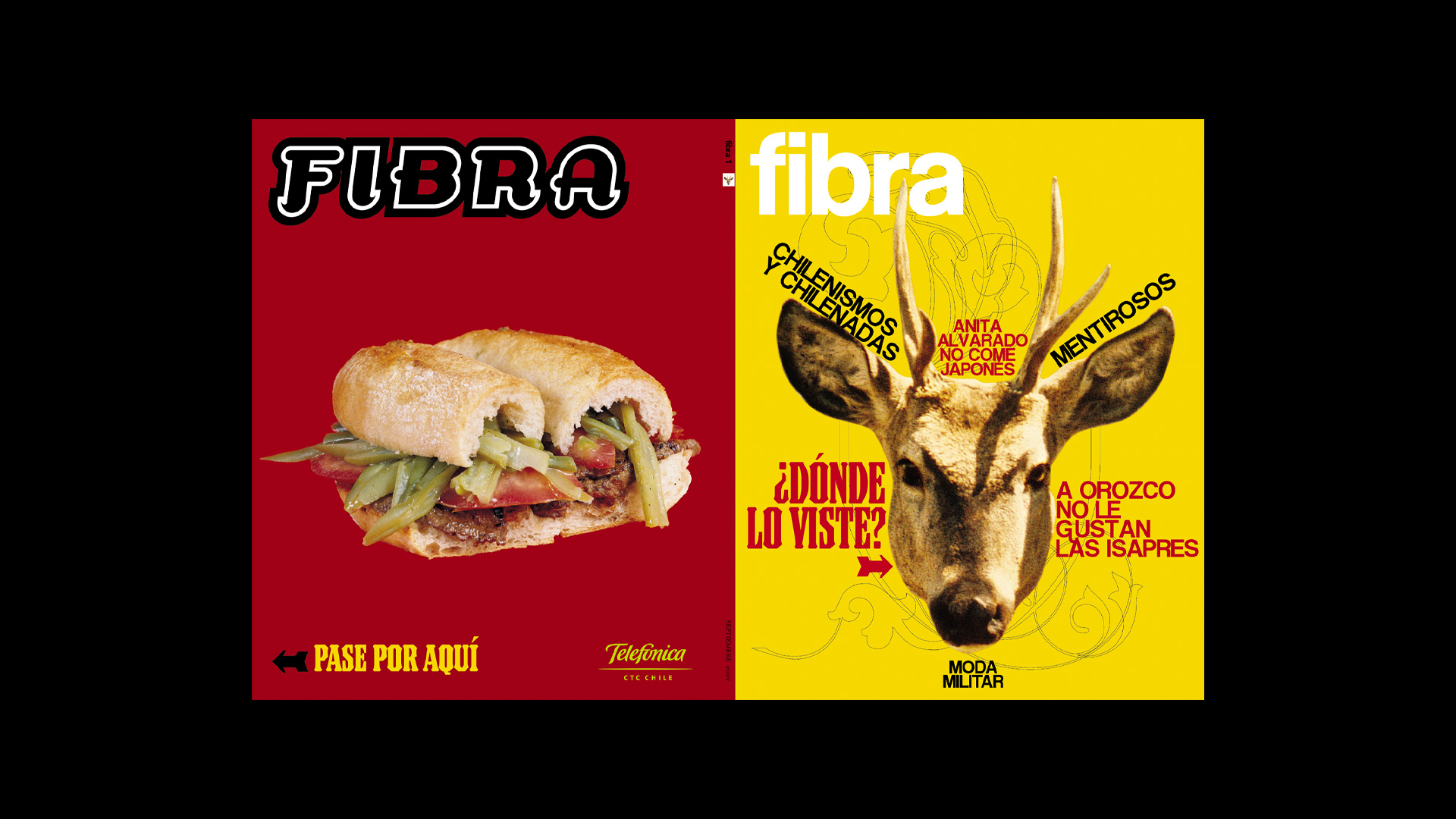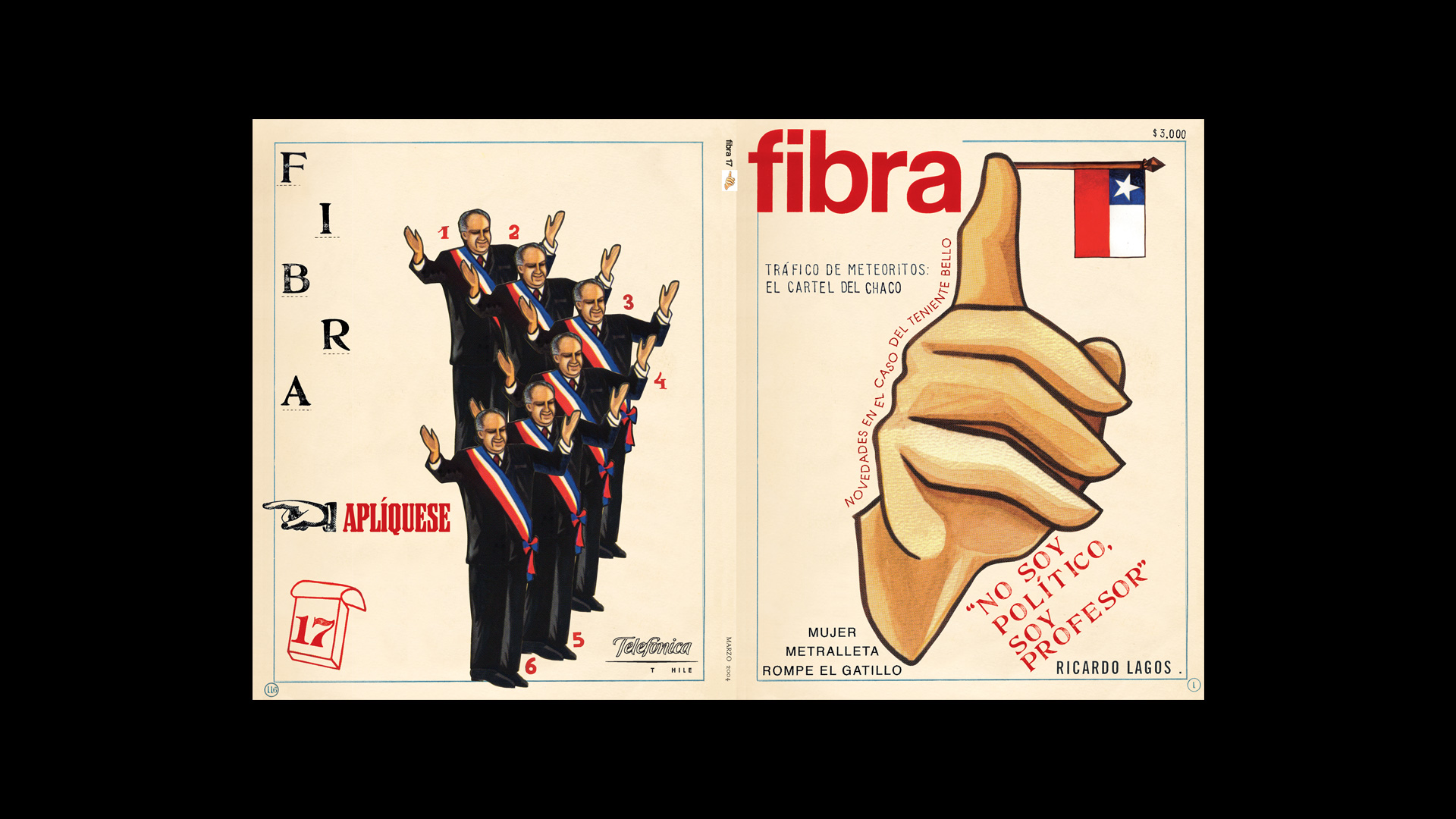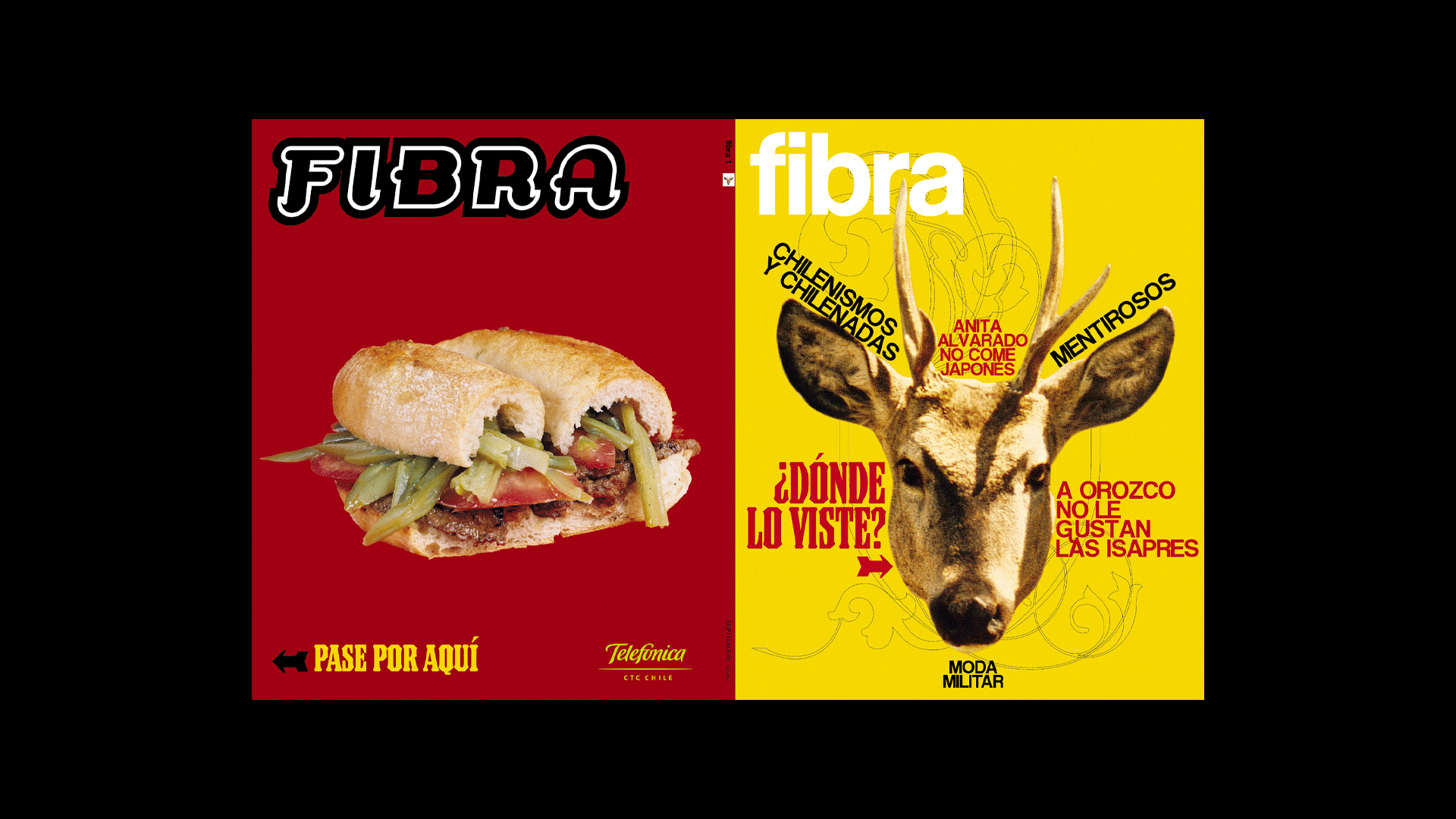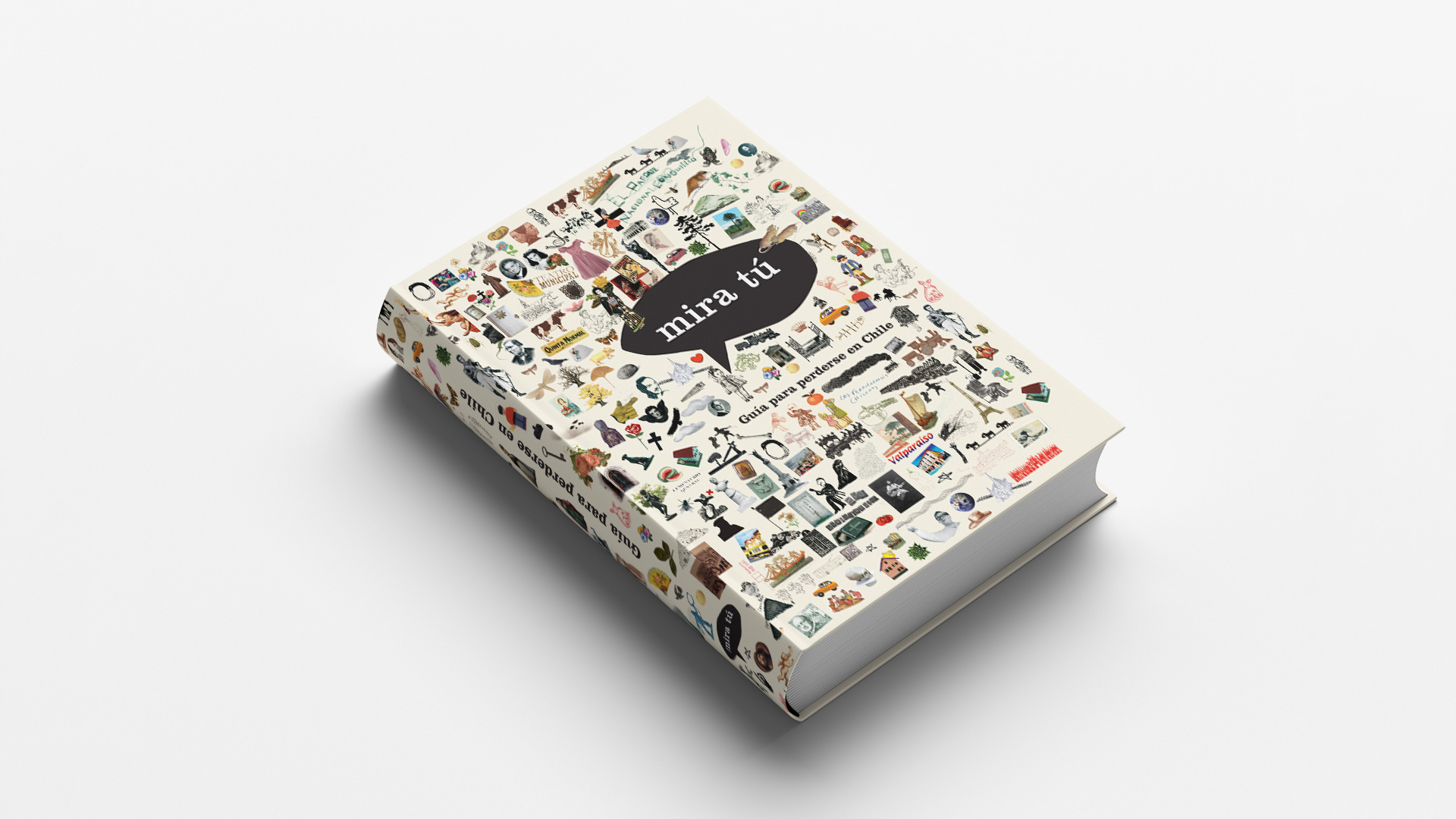Fibra Magazine
Client
Telefónica
Services
Art Direction
Content Direction
Creative Direction
Illustration
Magazine Design
Naming
Narrative and voice
Year
2002 – 2004
Team
Piedad Rivadeneira
Renato Díaz
Colaboradores
Juan Diego Santa Cruz
Truth be told, we are cheating a bit here: this is not properly Felicidad’s work, but instead one of those early jobs that led to the creation of Felicidad. One day, founder Piedad Rivadeneira got a phone call from Telefónica, the country’s biggest communication provider. What did they want? A magazine, apparently. And not just a corporate, logo-filled, uninteresting mag, but a real one – an interesting one. Theme? Whatever we want. Requirements? None in particular. Money? Not a problem. After pinching her shoulder, Piedad quickly realized what she had in her hands: a brand-new magazine, an open canvas of editorial possibilities to be worked with a talented team without having to worry about funding. The result was one of the most acclaimed, groundbreaking, and influential magazines ever created in Chile.
Since the beginning, the project called for a comprehensive approach to design: not just graphic styles and typographies, but we were called to imagine, map out, and shape the name and the aesthetic, the sections and the themes, the type of content and the contributions, everything. Together with The Clinic’s journalist Patricio Fernández and his team, we gathered a unique crew of writers and editors, such as Andrea Pallet, Rafa Gumucio, and Guillermo Hidalgo – some of the most brilliant thinkers in the industry we know – and began brainstorming. This is how fantastic things start to happen: a laboratory of visionaries, a project defined by its freedom, an amazing venture in which we could explore diverse ways to approach an editorial project and the consequences of an innovative creative process.
And it was a blast. Revista Fibra turned out to be a huge success. A magazine with a print run of 60.000 in a tiny country with a bit more than 16 million people is not something you see every day. There had been nothing similar before it and there hasn’t been anything similar after it. It all was special, from the somewhat elegant and yet desecrating tone of the interviews, to the innovative editorial structure and the remarkable art direction of the characters featured in its pages, with some portraits considered iconic up to these days. The magazine grew and grew: photographers, painters, illustrators, sculptors, writers – everybody wanted to work with us and contribute to the magazine, which ended up generating an academy of incredible work, characterized by extreme richness, freedom, and possibilities. Which, at the end of the day, constitutes the type of work we aim to do here at Felicidad.
